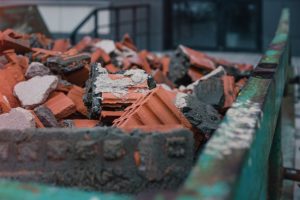What Can Be Disposed of in a Skip Bin?
Skip bins are essential for handling large amounts of waste, whether it’s from home renovations, construction projects, garden clean-ups, or commercial activities. However, understanding what can and cannot be disposed of in a skip bin is vital to ensure safe, efficient, and environmentally responsible waste disposal. This comprehensive guide will walk you through the various types of materials that can be placed in a skip bin and offer best practices for making the most of this service.
General Waste
Household Rubbish
General household rubbish is one of the most common types of waste disposed of in skip bins. This includes everyday items such as:
Food Waste: Leftover food scraps and packaging.
Old Furniture: Broken or unwanted furniture like chairs, tables, and cabinets.
Clothing and Textiles: Worn-out clothes, fabrics, and linens.
Plastic and Paper Products: Containers, bags, and disposable packaging.
It’s important to note that household waste should not contain any hazardous materials like chemicals, batteries, or paints, which require special disposal methods.
Construction and Demolition Waste
Construction and renovation projects generate a significant amount of waste that is ideal for skip bins. This includes:
Bricks and Concrete: Leftover materials from demolition or building work.
Tiles: Broken or unused tiles from bathroom and kitchen renovations.
Wood: Timber, plywood, and untreated wood are all acceptable.
Metal Scraps: Aluminum, steel, and other metals from construction or repair projects.
These materials should be sorted and disposed of properly to prevent overloading and ensure that they can be recycled when possible.

What Can Be Disposed of in a Skip Bin?
Green Waste
Green waste refers to organic materials, often generated during garden clean-ups or landscaping projects. Skip bins can accept:
Grass Clippings and Leaves: Waste from lawn mowing or raking.
Branches and Tree Limbs: Small to medium-sized branches or trimmings.
Plants and Weeds: Old plants, flowers, and general garden debris.
When disposing of green waste, ensure it’s free from contaminants such as plastics or chemicals to allow for eco-friendly composting or recycling.
What Cannot Be Disposed of in a Skip Bin?
Hazardous Waste
One of the most important things to remember is that skip bins are not designed to handle hazardous waste. Hazardous materials pose risks to human health and the environment, requiring special treatment. These include:
Chemicals: Paints, solvents, pesticides, and other chemical substances.
Asbestos: A highly dangerous material that requires professional removal and disposal.
Batteries: These contain chemicals that can leak into the environment if not properly disposed of.
Always check local regulations regarding the correct disposal of hazardous waste and avoid placing these items in your skip bin.
Electrical Appliances and E-Waste
Electronic waste (e-waste) such as old appliances, televisions, and computers cannot be disposed of in standard skip bins. These items contain components that can be harmful to the environment if not handled properly. Examples include:
Fridges and Freezers: Contain harmful refrigerants that require special disposal.
Televisions and Monitors: Contain hazardous materials like lead and mercury.
Computers and Mobile Phones: Require e-waste recycling to recover valuable materials.
Many regions offer dedicated e-waste recycling programs where you can safely dispose of these items.
Medical and Biohazard Waste
Skip bins are not suitable for medical or biohazard waste, which must be handled with care to avoid health risks. This includes:
Syringes and Needles: These should be disposed of in designated sharps containers.
Expired Medications: Should be returned to pharmacies or special disposal programs.
Infectious Materials: Any biohazard waste must be disposed of in accordance with medical regulations.
Improper disposal of medical waste can lead to significant health and safety risks.
Tips for Using Skip Bins Efficiently
Separate Your Waste
To make the most out of your skip bin, it’s a good idea to separate different types of waste. This not only ensures efficient use of the bin but also promotes better recycling practices. For example, keep general household waste separate from green waste and construction debris.
Choose the Right Size Bin
Before hiring a skip bin, it’s essential to choose the right size based on your project. Skip bins come in a variety of sizes, from small 2-cubic meter bins to large 10-cubic meter options. Ensure you select the correct size to avoid overloading or requiring multiple bins.
Avoid Overloading the Bin
Most skip bin services have a clear guideline regarding the fill level of the bin. Overloading the bin can lead to safety hazards and extra fees. Make sure the waste is evenly distributed and does not exceed the top rim of the bin.
Follow Local Regulations
Different areas have different rules when it comes to skip bin use. Always check with your local council or skip bin provider about what can be disposed of and where the skip bin can be placed. Following these regulations helps avoid fines and ensures proper waste management.
Conclusion
Skip bins are an invaluable resource for waste management, offering an efficient and practical way to dispose of large volumes of waste. From general household rubbish to construction debris and green waste, skip bins can handle a variety of materials, making them ideal for both residential and commercial use. However, it’s important to be aware of what cannot be placed in a skip bin, such as hazardous waste, electrical appliances, and medical waste, to ensure safe and responsible disposal. By following these guidelines and making informed choices, you can make the most of your skip bin service and contribute to a cleaner, greener environment.
